If you do
NOT see the Table of Contents frame to the left of this page, then
Click here to open 'USArmyGermany'
frameset |
102nd
Signal Battalion
Bambergerhof Terminal/Relay Site
Looking for more information from military/civilian
personnel assigned to or associated with the U.S. Army
in Germany from 1945 to 1989. If you have any
stories or thoughts on the subject, please contact me . .
|
|
Main Page
1963-65 (John Kruk)
|

USAREUR Patch, 1955-19..
|
|
|
|
| |
| 102nd
Signal Battalion |
| |
|
| |
BAMBERGERHOF RADIO STATION
|
| |
| (Source: Email from John B. Kruk, Jr., 102nd Sig Bn) |
| BAMBERGERHOF (BHF) , was one of many microwave radio sites which was part of USAREUR’s Multi-Channel Radio-Telephone Network. This was an extensive microwave/radio relay network all over Europe (Germany, France, Belgium, Italy, etc.). I believe most sites were permanent, with a fixed tower and building. Also many of the sites were small, usually with 6 - 8 personnel; however, there were a few larger ones. |
 Sp4 John Kruk at Main BFH Sign
Sp4 John Kruk at Main BFH Sign
|
|
I was stationed at Bambergerhof Radio Station (BHF), from 1963-1965.
BHF was part of Co. C, 102nd SIG BN, which served central Germany. Co. C HQ was at RHINE ORDNANCE BARRACKS (ROB) in VOGELWEH (near KAISERSLAUTERN) and we went there about once or twice a week for mail, supplies, etc.
Food and non-military supplies were usually purchased at the Commissary and/or PX at VOGELWEH. |
|
|
We would also go to MIESAU (ARMY MUNITION DEPOT) which was only about 10 miles away. Miesau had a small PX, an infirmary, dentist, and fuel depot. For other medical we went to LANDSTUHL (Military Hospital), or for other miscellaneous items, RAMSTEIN (Airbase).
To pinpoint BHF ( ), if you have a detailed map, take the A-6 (E-50) AUTOBAHN from MANNHEIM westward towards SAARBRÜCKEN. Then take the WALDMOHR Service Plaza/Exit (about 15 miles west of KAISERSLAUTERN). BAMBERGERHOF was about 5 miles NW of the WALDMOHR exit, and you could see the tower from the AUTOBAHN. Landstrasse (local highway) L-354 goes from WALDMOHR, past DUNZWEILER, on up to BAMBERGERHOF, and then down the other side to BREITENBACH. The actual village of Bambergerhof was quite small (I’m guessing only around 20 homes), so it may not be on all maps. ), if you have a detailed map, take the A-6 (E-50) AUTOBAHN from MANNHEIM westward towards SAARBRÜCKEN. Then take the WALDMOHR Service Plaza/Exit (about 15 miles west of KAISERSLAUTERN). BAMBERGERHOF was about 5 miles NW of the WALDMOHR exit, and you could see the tower from the AUTOBAHN. Landstrasse (local highway) L-354 goes from WALDMOHR, past DUNZWEILER, on up to BAMBERGERHOF, and then down the other side to BREITENBACH. The actual village of Bambergerhof was quite small (I’m guessing only around 20 homes), so it may not be on all maps.
BAMBERGERHOF RADIO STATION (BHF) - More Details (1963-1965) |
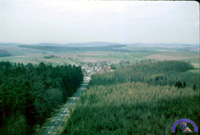 Bambergerhof
Bambergerhof
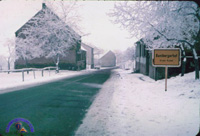 Winter in Bambergerhof
Winter in Bambergerhof
|
|
The BHF location was an isolated rural site located on a hilltop, approximately 13 miles west of RAMSTEIN AIRBASE. It was right on the SAARLAND/RHINELAND-PFALZ border.
It was not a typical military base, just 6 - 8 guys, a 250' tower, and a concrete building. Actually the building was more like a typical German house, 2 stories, stucco construction. We worked, lived and stayed right at the site. The equipment was in the basement and we lived on the second floor.
We were basically a stand-alone self-sufficient facility. We had no “mess hall,” but did have our own kitchen and we bought our own food. Also, because of our “rough duty” :-), we got “foreign duty pay” and also an extra “quarters & food allowance.” We were paid with a standard bank check, which we usually cashed at the bank at the PX complex. We also would convert some of our pay into Deutsche Marks (German Money). For a while, the exchange rate was over 4.00 DM for a $1.00. |
|
|
We were basically a stand-alone self-sufficient facility. We had no “mess hall,” but did have our own kitchen and we bought our own food. Also, because of our “rough duty” :-), we got “foreign duty pay” and also an extra “quarters & food allowance.” We were paid with a standard bank check, which we usually cashed at the bank at the PX complex. We also would convert some of our pay into Deutsche Marks (German Money). For a while, the exchange rate was over 4.00 DM for a $1.00.
We used commercial power but we had an adjacent generator building with two large standby diesel generators. The generator system was rather interesting. The main unit was actually a “motor-generator set” that supplied the main power for our operations. It consisted of several units connected together and driven by a common drive shaft. On the head end was a massive ac motor, then a 2½ ton flywheel, a large matching AC generator, and finally a large diesel engine. Commercial power drove the AC motor, which in turn drove the flywheel and generator. If we lost commercial power, the heavy flywheel kept the generator turning until the diesel engine kicked in. Usually the only indication of loss of commercial power was a slight blink of our lights, and then an alarm horn blowing; the system was basically a large un-interruptible power supply. I only recall one or two times that the primary diesel failed to kick-in and we had to manually start it. We also had a second large diesel generator, but it was manual-start / manual-switch-over.
The microwave equipment was similar in operation. Main operating equipment bays, with automatic switch-over standby units; plus additional standby and spare equipment. System “down-time” was just “UN-THINKABLE!” |
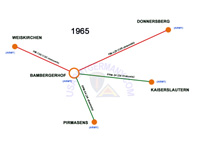 Bambergerhof Radio Links
Bambergerhof Radio Links
|
|
We had two main shots, one to DONNERSBERG (DOG) and the other to WEISKIRCHEN/ SAAR (WKN). WKN was just a “thru repeater” to France. There was also an earlier shot to the USAF KINDSBACH COMMUNICATIONS CENTER (near LANDSTUHL) which was a link to RAMSTEIN AIR BASE. This shot was eliminated before I arrived. The other two shots were to KAISERSLAUTERN (KLN) and PIRMASENS (PMS). The PIRMASENS shot went on to ZWEIBRÜCKEN (ZBN), which then had several channels that served the CANADIAN AIRBASE @ ZWEIBRÜCKEN. |
|
|
We had two types of equipment, all of it being German-made “SIEMENS & HALSKE.” The DOG and WKN shots were FM-120 (frequency-division modulation). The KLN and PMS shots were PPM-24 (pulse-position modulation). There were 132 channels going to DOG and 120 to WKN. The KLN and PMS shots both had 24 channels.
BHF was considered a “terminal/relay” site where we could reduce the signal to an actual telephone conversation and then re-route it. The majority of our channels went “straight thru” but we did do some individual re-routing. We could actually listen to a telephone conversation, but this was normally done only for troubleshooting purposes, I don’t recall any of our personnel ever deliberately “eavesdropping.” Also, if we knew the location and telephone number of someone (such as a friend or classmate), we could “direct dial” or call him over the system.
Our building was two stories, similar to a German house. Concrete & stucco construction. (I happen to see a photo of another site and their building looked exactly like ours - maybe they were built to the same specs.) We had several rooms. On the upper floor, were 2 rooms used for sleeping quarters. The larger room had two stacked bunk beds for four persons. The smaller room had one bunk for the assistant station commander. We also had a larger room that was sort of a “day” room, with a TV, radio-phono, couch, lounge chairs, and two large tables where we usually had our meals. There was also a kitchen with pantry, a bath, and an arms room (with M-14's and an M-60 machine gun). There was also another M-14, with clip, next to the main front door.
Downstairs was a large equipment room with the SIEMENS & HALSKE microwave
equipment. PPM-24 bays and FM-120 equipment bays. In one corner was a cubicle where we had a large food freezer. There was also a supply room, which included emergency rations; and a work room. There was also a small sub-basement with the furnace. The furnace was oil-fired and I never remember ever having to do anything with it. Earlier, it must have been coal fired as the coal bin was still there.
(The FM-120 was newer, with 120 channel "frequency division modulation". We actually had 132 channels going to DOG, because we "double multiplexed" one of the channels with an additional multiplex adapter. The PPM-24 was older, with 24 channel capacity. It used pulse position modulation. If you watched it on a scope, you could see a "pulse train" with 24 channels following the synchronization pulse. The dishes could be the same, but we used 2 larger dishes because the distance was greater to the other station (DOG & WKN). More gain with a bigger dish. The wave guide went up to a "feed horn" on the dish (I don't know if you can see the horn on any of the photos).)
Adjacent to the main building was our 250' high tower with the microwave dishes. This was a structurally rugged self-supporting four-leg tower, about 40' between the legs. The legs had markings for demolition purposes with the amount and location of C-4 to be applied on each leg; configured for a “controlled explosion.” The tower was supposed to collapse and drop right on top of our building, similar to those videos that you see on TV where they bring down an old apartment building upon itself.
Outside was another building that housed our generators. At the far end of the compound was a bunker with C-4 explosives, fuze, detonators, and other munitions. At the other end, we had a small storage shed for miscellaneous items. Our site was shaped somewhat like a trapezoid, approximately 250' on the two road sides, and about 200' x 100' on the two other sides. Bordering on the front was a small paved main road, the adjacent side had a dirt farm lane, and the two back sides, woodland. We had a perimeter fence, and the main gate was on the farm lane side. (There was also another gate on the main road, but we never used it.) We had our own German civilian cook and every morning we would drive down the hill into the village to pick her up. She would cook breakfast and lunch and usually made plenty so that there would also be enough for supper. We usually took her back home around mid-afternoon. While her duties were that of a cook, being a German, she also did some “Putzfrau” work (pick-up after us, cleaned things that we didn’t, etc.).
We usually communicated with the other sites by using a “service channel” over the microwave links; but, we did have a field telephone (the typical field phone with a side crank). This had 3 lines, one was a German civilian line that went to Baumholder. The other was a dedicated microwave telephone channel that went directly to Kaiserslautern Military. The third line connected directly to the live radio “service channel.” The only way to telephone us was to get the Kaiserslautern Military Operator and ask for “X-3”; or use a German civilian phone and ask the German operator for BAMBERGERHOF (we could also direct dial our station from a German civilian telephone - but I don’t remember the number). The live service channel was “hot” all the time, so we could always hear a radio call over a PA speaker, or talk-back to them using the field phone.
Since WKN was only a thru-repeater, we couldn’t talk directly to them; and, the only way to contact them was by using our Baumholder civilian land-line telephone.
|
 BHF Radio Station with tower
BHF Radio Station with tower
|
|
We had two trucks (3/4 ton & 2 ½ ton). Also, several of us had a personal vehicle and we could buy some military gas for our personal vehicle. We were allowed a certain amount of military gas per month and could buy coupons for this; we could then redeem them for military gas. We could also buy an extra allotment of ESSO civilian gas coupons thru the PX at Miesau - these could then be used for gas and could be redeemed at any German civilian ESSO gas station.
There usually a total of about 6 - 8 personnel assigned to our site and we all got along fine. We usually worked 3 days and had 3 days off, so at most times, there were only 2 or 3 guys on site. We would sometimes “trade” work hours for longer time off; and, we carried a “permanent” pass and could usually “take off’ when we wanted.
We had a very good relationship with the area civilians and villages. They referred to our station as ... the “radar” station ... the “weather” station, or merely ... the “radio” station, etc. Most locals didn’t know our function or what we did. Very seldom did you see any military personnel in the region; and, I would say that the average German wasn’t overly fond of the US military; but, we were somewhat different - - - when we were introduced to a German civilian, we were always referred to as being from the “Turm” (German for radio tower). I don’t ever recall of any of our guys getting into trouble or getting into a fight. I recall occasions that if we would go to a new area “Gasthaus” (German for tavern); and, if there was any sign of friction or aggravation, it soon disappeared as soon as they learned that we were from the “Turm” ! |
|
|
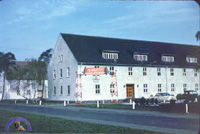 HQ 102nd Sig Bn, Sandhofen
HQ 102nd Sig Bn, Sandhofen
|
|
Prior to BAMBERGERHOF, I went to Signal School @ Ft. Monmouth, NJ; then to German Radio School at 102 SIG BN HQ at US Army Coleman Barracks in SANDHOFEN. Sandhofen was directly on the north side of the A-6 (E-50) Autobahn, on the north-west edge of Mannheim. After Sandhofen, I went directly to BAMBERGERHOF.
I remember, when I left radio school in Sandhofen, for BHF.
It was in December . . . I was freezing in the back of a canvass covered cold unheated drafty deuce & a half. There was a transportation sergeant there and he asked me where I was going. I proudly said “to Bambergerhof” - - - he said he never heard of it. I delightfully replied that it was supposed to be a mountaintop microwave radio site, there would be only 6 - 8 people there, we would work 3 days & have 3 days off, no large military base, no maneuvers, no tents, no war games, etc. He said; “son, if there was a place like that in the Army - - - I would be there!” |
|
|
Fear struck me, and chills went up my spine! Well, I ended up on a mountaintop microwave radio site, with only 6 -8 people, we worked 3 days, had 3 days off, no large military base, no maneuvers, no tents, no war games, etc. :-)
Quite often, I think of that sergeant, and wonder whatever happened to him.
I was drafted, and it didn’t take long to find out that draftees were not very well liked. We were all called “US’s” because of our S/N prefix; and, we were considered “the-lowest-of-the-low” by the regular army (RA) personnel. The only person below a “US”, was an “NG” (National Guard). Well I was a draftee, the first at the site, but at our site, we all got along super fine, as equals.
As mentioned, the microwave equipment was in the basement and in the summer we would sometimes leave the basement door open to keep the place cool. It was a large lift door, similar to a garage door, and if we forgot to close it for the evening, we would
be invaded by Maikäfer’s (a large beetle, similar to our Junebug). They would enter in droves to keep warm for the evening. They would literally pile up on the floor several inches deep. We had to sweep them up and actually shovel them into a wheelbarrow. We could easily get one or two full wheelbarrow loads.
For recreation, we had a TV and we could pick up American TV from Ramstein Airbase, or watch German TV. We had a radio/phono console and listened to music from Radio Luxembourg, played records, or listened to AFN (US Armed Forces Network) in Kaiserslautern or Frankfurt. We also had our own movie projector and got late run films from our HQ (usually 2 or 3 films a week).
Also, while I was at BHF, I had a “ham” radio license, and I still do (K3KR). So I got permission to set up and operate a ham radio station there (DL4KI) and was able to use it for some extra off duty relaxation.
We were allowed to buy and keep alcohol on the site (2 cases of beer and 2 liters of
spirits). You could drink on site, as long as you were off duty, and no one ever abused this privilege. Our cook made wonderful “fruit salad” (flavored heavily with cognac). If we got visitors from another site, we usually asked them to join us for lunch or dinner - and they would always ask if they could have some of our famous fruit salad for desert.
That brings up another memory. We were at the commissary shopping for food one day. Then we went to the Class 6 (Liquor) store and got some beer, and spirits, putting it into the back of our 3/4 ton military truck. Out of the corner of our eyes, we could see a couple of MP’s watching us. As we left, they pulled us over citing some sort of violation - hauling booze in a military truck while on duty. We said that we were allowed to do this and suggested that they call our HQ to verify this (they found real humor in our reply). They asked for our telephone number and we said they had to ask the military operator for “X-3.” Of course, our X-3 number generated even more unbelief with an additional expression such as “do you think we are stupid, who do you think you trying to fool.” We finally convinced them that this was our phone number and they finally called X-3, found out it was a “authentic” number, and apparently to their surprise, got things cleared up. I remember them saying “We don’t know who you guys are or where you are from, but you are free to go.”
There were numerous other similar events, as we were often regarded to as some sort of “obscure mysterious” outfit.
Well basically that’s the BHF story. If I remember anything else, I’ll add it. |
|
|
|
|
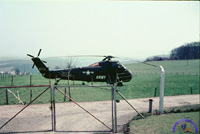
1. Surprise command visit (KB)
|

2. Surprise visitor returns to Bn hqs (KB)
|
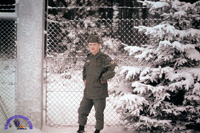
3. Sp5 Kruk (KB)
|
|

4. Tower (KB)
|

5. Generator Bldg (KB)
|

6. Readiness test (KB)
|
|
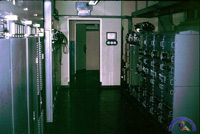
7. FM-120 (L); PPM-24 (R) (KB)
|

8. FM-120 Multiplex equip (KB)
|
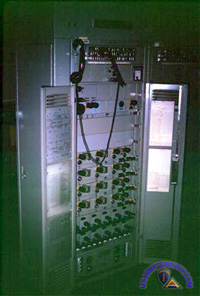
9. VZ-12 Multiplex equip (KB)
|
|
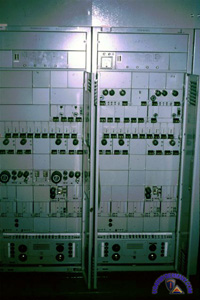
10. V60Fu & V120Fu Multiplex equip (KB)
|
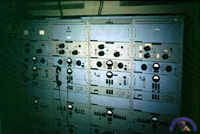
11. PPM-24 Radio Bays (KB)
|

12. PPM-24 Multiplex equip (KB)
|
|
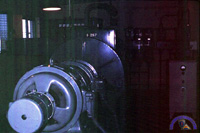
13. Motor-generator set (KB)
|

14. Control panel (KB)
|

15. Automatic controller (KB)
|
|
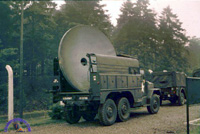
16. New dish (KB)
|
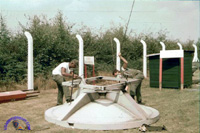
17. Rigging the dish (KB)
|
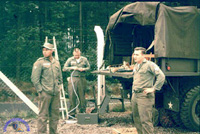
18. Tower team (KB)
|
|

19. Beard on tower (KB)
|

20. Amy, the cook (KB)
|
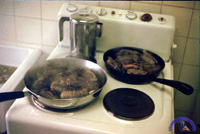
21. Rouladen (KB)
|
|
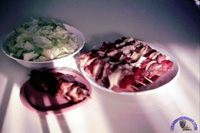
22. Schaschlik (KB)
|
|
|
|
|

|
|
| |
| (Source: Email from Sebastian Hoock, Germany) |
Former Radio Station
Bambergerhof |
|
|
|
|

1. Former radio station (KB)
|

2. Radio tower and generator bldg (KB)
|
|
|
|
 |
|
| |
| |
|































